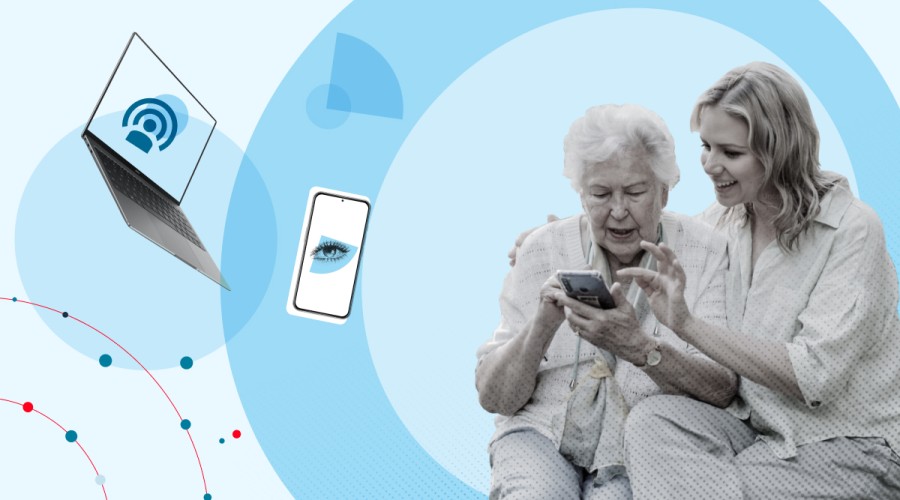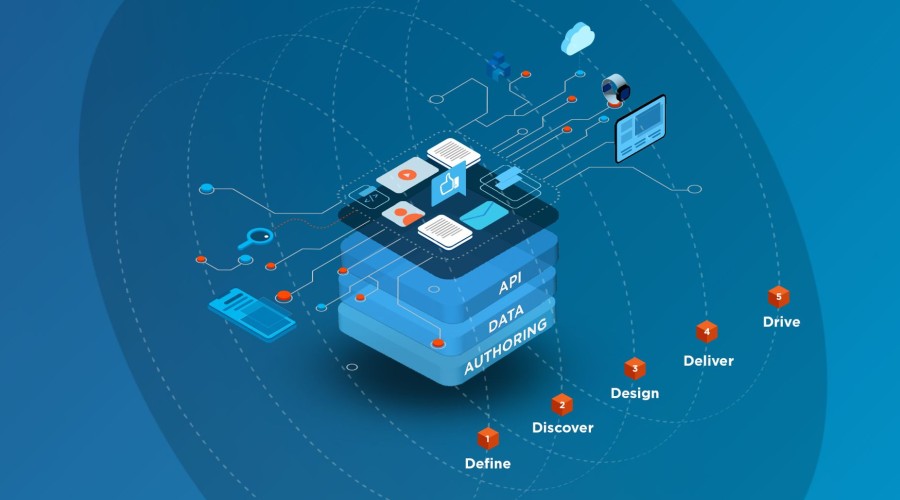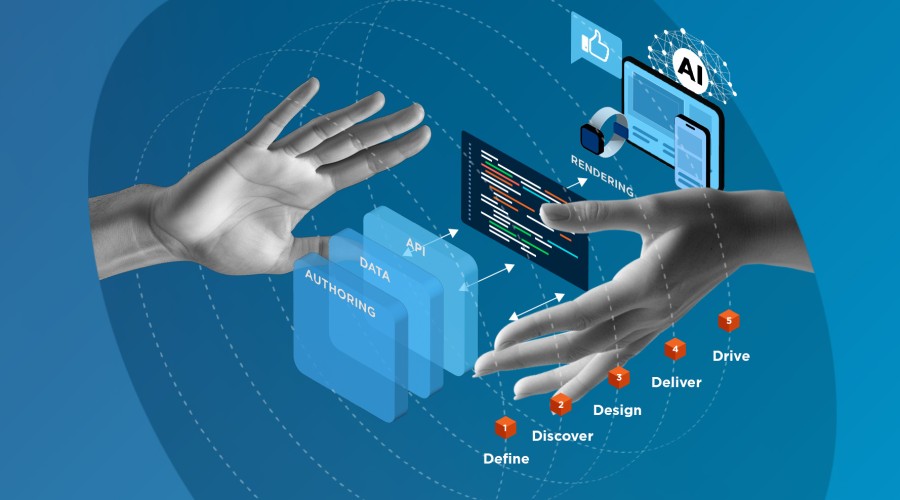Ethnographic research has long had a place alongside other traditional UX research practices.
Ethnography, or in other words, a systematic representation of culture, becomes increasingly important when it comes to understanding how users interact with products and services. We need to learn how, when and where a user is interacting with your product, to see what is going on around them, what they are seeing, feeling and hearing.
Ethnographic studies of this kind would usually be performed in person. A researcher would 'shadow' the participant in their home, their workplace or the locations that they would generally interact with a product or service. By being in the same location they can experience the same contexts and better understand the people they are designing for. However, this was often a costly and intrusive affair, involving travel, equipment to be sent back and forth, as well as a level of discomfort and awkward situations.
Digital ethnographic research is simply the logical evolution of ethnography. It opens up even more opportunities and enables researchers to understand consumer behaviour in more ways than ever before.
Thanks to smartphones and tasks such as video diaries and photo uploads, researchers can now peek into the lives of respondents without physically needing to be there. It's easier than ever to capture and assess behaviours and reactions as they happen, delivering true to life data quicker and easier. We’ll set out tasks to see how users perform certain actions - get them to film themselves in their environment, show us around where they live, take photos of the tools they use and everyday parts of their lives.

Researchers can now peek into the lives of respondents without physically needing to be there.
What is Digital Ethnography?
Digital ethnography is an umbrella term that includes Virtual Ethnography and Netnography:
- Netnography collects data related to the study using various online tools. It studies and observes the online social behaviour of individuals.
- Virtual Ethnography also implies the observation of online social situations and community cultures. However, goes further by taking a more interactive and collaborative approach to study individuals and social behaviour through direction interaction using digital tools.
A closer look at Netnography
Netnography, a term coined by Robert Kozinets, is a useful way to study cultures and behaviours online. It usually involves studying online communities such as forums and newsgroups, as well as social media platforms like Twitter and Instagram.
The methods to understand the communications and conversations online vary.
Big data is often used to log patterns and themes on a large scale. Tools, such as Google Analytics, enable you to observe how many people are talking about a subject and what they are saying – giving you a broad overview on a topic. However, sometimes it's important to understand things at a closer level, to see who said something, to contextualise why they said this and to whom.

Virtual research is now easier than ever.
Netnography in this case would mean observing and integrating into communities at a deeper level, for instance joining an online forum and learning the cultural norms, semiotics and terms that are used. Interacting with community members to learn about the concepts that concern them and their motivations and drivers. Using this method for more qualitative data collection as opposed to quantitative.It might also involve observing social media interaction and activity – e.g. reading Twitter posts or learning more about communities through Instagram and Tik Tok.
It's worth bearing in mind the ethical concerns of this approach however, and care must be taken to not exploit or deceive any users you involve in your research.
Digital Ethnography in action
There are many different ways to carry out digital ethnographic research. Some of the most effective include:
Cultural probes
Cultural probes usually require participants to use a camera or a voice recorder to take photos, videos or record voice memos about their everyday lives. These are often conducted on a smartphone, allowing researchers to receive live updates and cut out time and distances. Using platforms that the participant is most comfortable with can be especially helpful for instance, interacting via Instagram via stories and reels, or getting a participant to create a Pinterest board of their every day lives or environment.
One-to-one interviews
One-to-one interviews that might have previously been performed in person can now be mediated by technology. As interviewers and participants are not co-present, this allows greater flexibility of time and location. By using applications such as Dovetail, interviews can be transcribed with ease and insights pulled out and gathered to create themes and patterns for researchers to work from.
In an age where remote working has become common, and people communicate over the phone more than in real life, apps such as WhatsApp, Facebook Messenger and Zoom can be common spaces of conversation.

Zoom is a great tool to conduct one-to-one interviews.
Remote (group) interviews
Much like one-to-one interviews, remote group interviews and exercises can be performed to collate group dynamics and thoughts. These conversations can be structured with tasks, using tools such as Miro to establish objectives, collect findings and make interactions livelier and more fun.
Digital diaries
Diaries give detailed insight into the daily experiences of users in their cultural context. Smartphones or online platforms make this method less intrusive and easy to combine with everyday practices, providing more opportunities to gather accurate information. They allow users to get down their thoughts and feelings and can help to really bring together insights in a more humanistic way.
This research method can bring together methods already used by participants, for instance if they are comfortable using Instagram then that can be worthwhile. Though there are other tools on the market that allow a researcher to structure exercises and tasks, support with recruitment and provides functions to analyse diary studies.
We would recommend any of the following:
Intercept surveys
Geofencing and intercept surveys prompt users and customers to fill in quick surveys is a great way to gather immediate opinions on subjects and experiences. Usually we can perform a survey at a location, for instance when a customer is leaving a shop. With digital technology we can anticipate when a user is entering a location and push surveys to them. This can be greatly enhanced with the use of geo-fencing, to capture the response to a location or event as and when it is happening.
HotJar, Typeform, Google / Microsoft Forms and Qualtrics are all good solutions for intercept surveys. There are also other tools, such as Ethnio, that can adapt to specific users by their cultural and environmental situation, as well as creating customer pools and offering incentives for participants in research.

HotJar, Typeform, Google/Microsoft Forms and Ethnio are all good solutions for intercept surveys.
Online behaviour observation and analytics
Observing how a user interacts with a website, seeing what messages, imagery and topics are of interest to them can be a very useful tool to understanding more about a user's interests and habits -what better way to understand a consumer’s natural behaviour than to see what they see. Eye tracking has several applications in market research from understanding shopper behaviour, to measuring marketing effectiveness, to exploring how consumers interact with digital content. All that is required for participants is to wear glasses that will track their eyes movements as they shop, browse the Internet, etc.
Learnings
Successful remote research starts with an honest look at how to leverage the opportunities, while mitigating against the limitations. There are a few key principles to make the most of remote ethnography:
Structure is key
Make the most of the time you have with them by structuring engagements over a longer period of time – for instance, an interaction with a participant might be several meetings over 1-4 weeks.
A model worth keeping in mind would be:
- Starting with some pre task exercises to get users engaged
- Short introduction call to “break the ice” or other types of brief audio exchange (not every interaction has to be on video!)
- A lengthier video call
- Virtual shadowing (i.e. video call observing the participant performing a task, usually on their computer or phone)
- Closing interview where we revisit some conversations or artefacts produced beforehand. A useful exercise at this point is for the participant to reflect on their time during the previous encounters and feed back their thoughts. This can also be done in a digital diary.
On top of that planning is very important. Digital Ethnography means you can interact with many more people, but keeping track of them can be very difficult. This is why using software like Indeemo is helpful to organise and manage your research.

Digital Ethnography means you can interact with many more people.
Meet people in their context
Helping participants feel comfortable and enabling them to share their thoughts and feelings in a way that feels intuitive to them can be very helpful. While there are several exciting tools out there often it can be helpful to try to use the apps and platforms that they are already comfortable with. So conducting conversations over WhatsApp, or Zoom, applications they are already using helps to create that level of comfort.
Also bear in mind the devices that participants are using on a day-to-day basis, and aim research to fit around that, as well as adapting device choice to the type of information needed.
Anticipate disruption
Unlike meeting someone in their home or at their door, technology comes with its own set of problems. Users quite often have trouble using new applications, WIFI often cuts out and isn't the same speed for everyone. With that in mind, as mentioned, sticking to regularly used devices and applications means users will be able to take videos, send messages and chat without having to learn new methods or navigate around for buttons and functionality.
Tech difficulties can also lead to participants becoming flustered and can lead to a disruption of rapport. It can help to ease the pressure by performing shorter, more varied sessions, rather than placing all the emphasis on one long slot.
It's also worth mentioning that varying the type of interaction can lead to a reduction in fatigue, you don't need to be on a video call every time, as a quick message back and forth can be just as useful.
Set tasks which explore their environment
Online tasks gives us the chance for users to explore and surface the environment in which they are immersed. Using drawing tools like online whiteboards, even collaborative drawing tools such as Figma and Miro, we can get users to get involved in activities that illustrate patterns in their world. Drawing out relationship trees to demonstrate how social communities work together, and a great opportunity to excite and engage participants and break up the conversations.

Tools like Miro can get users to get involved in activities that illustrate patterns in their world.
Conclusion
One of the strengths of interacting with someone in person and living and breathing their environment is that it really allows a researcher to fill in the details of a person’s life in a way that is difficult to do otherwise. Digital Ethnography, if used well, can replicate much of that insight, and also brings with it a range of advantages. By widening the scope of subjects, it allows the researcher to play with time, space and context to engage the participant in new and exciting ways and tease out insights that might have been difficult to achieve in real life. This has to be balanced with the effort of planning and designing these interactions, but that is time well spent, and will lead to far greater outcomes and more engaged subjects.
Digital Ethnography can be rewarding and lead to an incredible level of understanding of users. The loss of being able to meet people in person this year doesn’t mean we can’t learn more about them.




